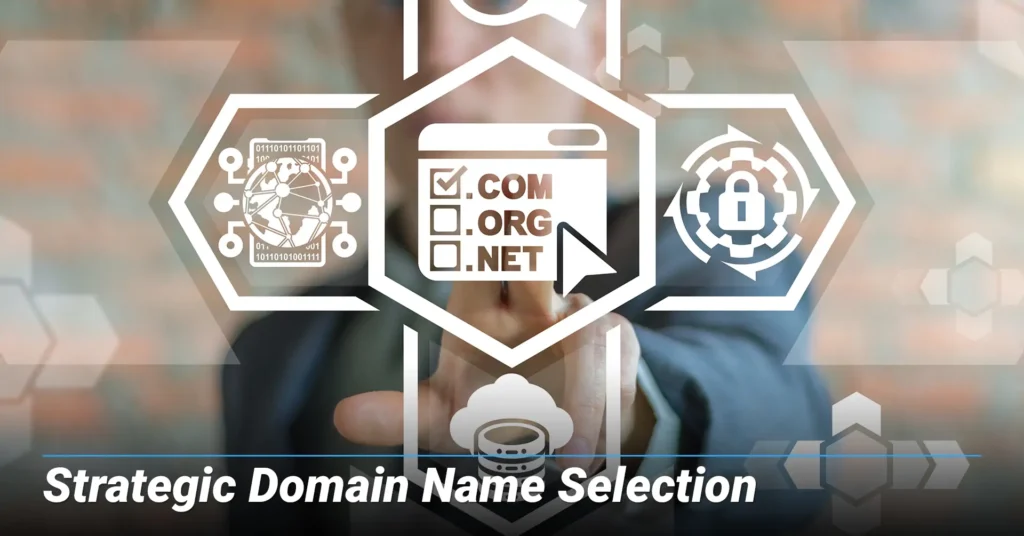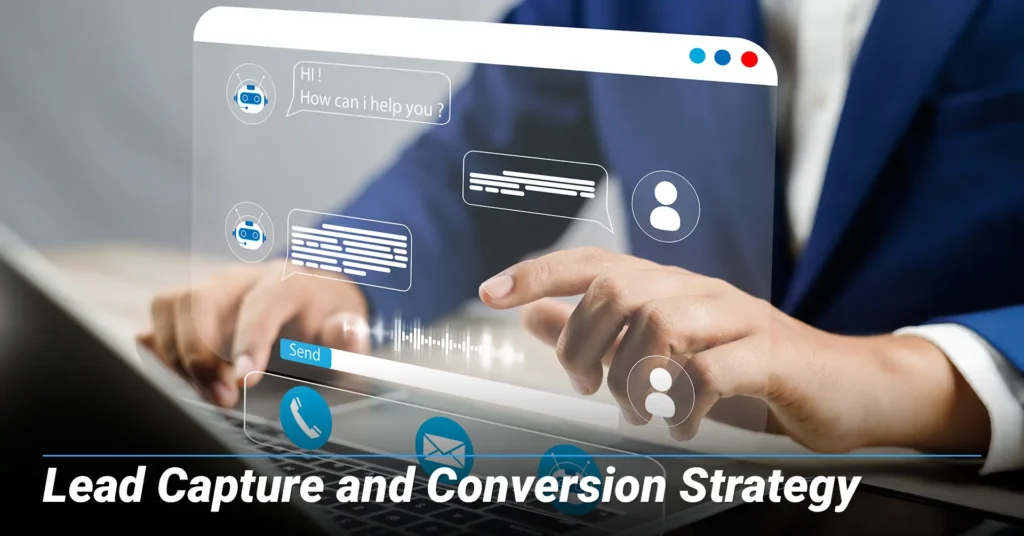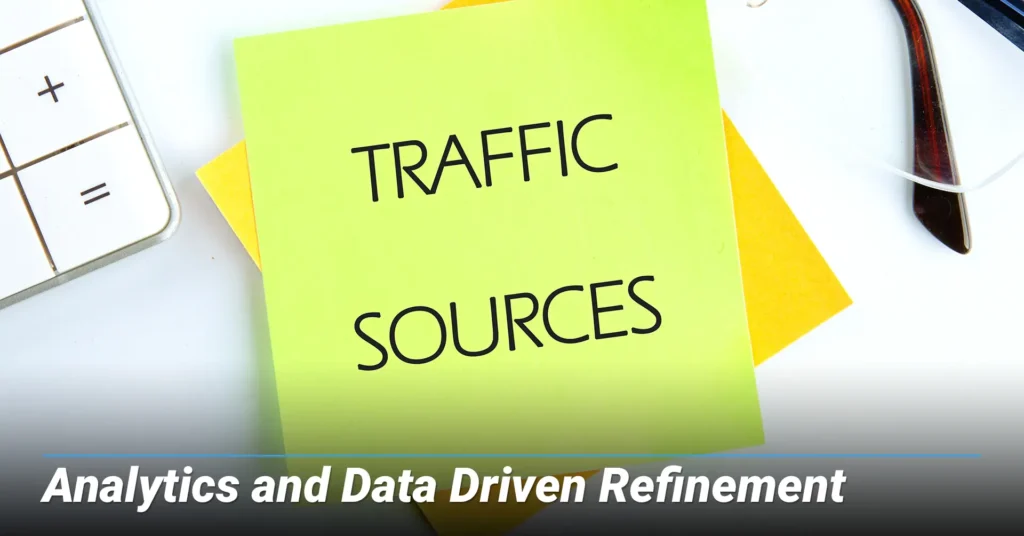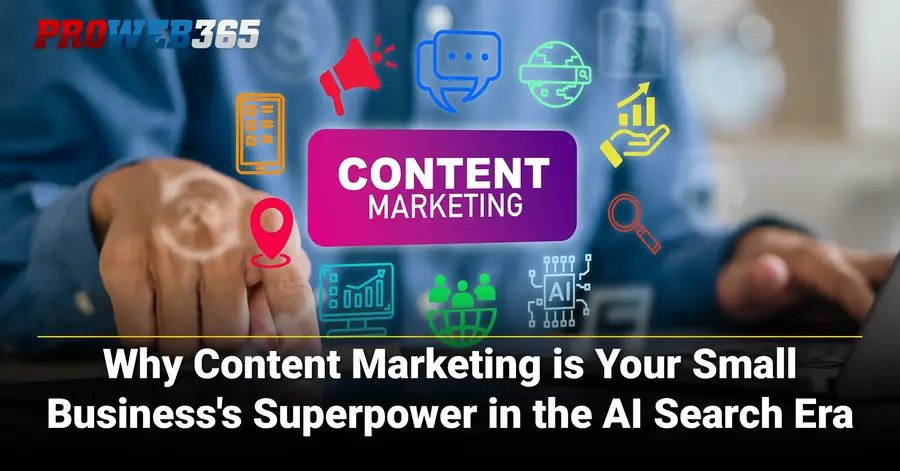Establishing a Winning Real Estate Agent Website in the AI Era

The real estate industry has turned to almost entirely digital. Nearly every home search starts online, and clients expect instant, personalized information. In this environment, a real estate agent’s website is no longer an optional brochure; it’s a central engine for lead generation, brand credibility, and business growth. This guide outlines practical and actionable strategies to build a high‑performing real estate website that meets modern expectations by leveraging emerging trends like artificial intelligence (AI) search.
Key recommendations such as choosing a memorable, scalable domain name; investing in mobile‑first design and professional visual content through blogs, biographies and community guides; optimizing for search engines and conversational AI; and integrating your website with email and social media are some of the few items that will be discussed below. By following these steps, real estate professionals can transform their websites into powerful, long‑lasting assets in an AI‑driven real estate market.
1. Your Digital Storefront in an AI‑Driven Market

Homebuyers increasingly rely on digital tools to explore properties and research agents. According to industry statistics, more than 80 percent of property searches begin online. Today’s buyers use smartphones, tablets, voice assistants and AI‑powered search engines to ask natural‑language questions such as “best neighborhoods near Mayo Clinic with parks” or “townhouses in Rochester under $400k.” These developments mean that a real estate agent’s website must go beyond a static listing page — it needs to be a responsive, informative hub capable of answering questions, collecting leads and showcasing expertise around the clock.
Building your own site rather than relying solely on company pages provides full control over branding, search equity, and customer data. A personal website is an asset that grows in value. It allows you to switch brokerages without losing domain authority or leads and can even be sold in the future if your business changes. This guide explains how to create such an asset, balancing human-centric design with technical optimization and AI readiness.
A Strategic Guide to Selecting a Great Website Designer
When you're a small to mid-size business owner or organizations, a website is more than just an online brochure; it's a foundational pillar for your identity, operations, and growth. In the AI era, a professional,...2. Strategic Domain Name Selection

A. Anchoring Your Digital Identity
Setting a domain name is a foundational step. Choosing one that’s short and memorable is easier to share and helps potential clients recall your brand. Avoid hyphens, numbers, and complex spellings that can create confusion. Before registering a domain, search the U.S. Patent and Trademark Office (USPTO) and the World Intellectual Property Organization (WIPO) databases to ensure there are no conflicting trademarks. This protects you from future legal issues and ensures ownership of the name to build upon.
B. Neutral Branding for Growth
If the domain includes your personal name, it becomes difficult to sell or rebrand later. Instead, choose descriptive words tied to your specialty or region. Names like LuxuryLiving.com or RochesterHomesHub.com are broad enough to grow with your business while remaining appealing to future buyers. Choosing a neutral domain also allows you the flexibility to build a team or franchise without being limited by one individual’s identity.
C. Domain Extensions and Social Handles
Traditional .com domains remain the gold standard due to familiarity and trust. Newer extensions like .realtor or .estate can signal professionalism, but they lack search engine advantages over .com. As you brainstorm names, check for matching social media handles on Facebook, Instagram, TikTok, LinkedIn and other platforms to keep branding consistent across channels.
3. Design for Excellent User Experience

A beautiful, functional website fosters trust and encourages visitors to stay. Research shows that 88 percent of users leave a website due to poor user experience and may not return. Therefore, focus on design principles that support clarity, speed, and accessibility.
A. Visual Appeal and Professional Photography
Photos and videos are your most powerful assets. Properties with professional photography sell up to 32 percent faster and can command higher prices.
To captivate visitors:
- Use high‑resolution images that showcase each property’s best features. Consider hiring a photographer or learning basic photography skills.
- Incorporate drone footage and 360‑degree virtual tours for a dynamic view of listings and neighborhoods.
- Maintain consistent branding—logo, colors and typography—across the site and marketing materials.
- Employ whitespace and clear headings to organize information, making your site easy to scan.
B. Mobile‑First Responsiveness
More than 70 percent of real estate website traffic comes from mobile devices. Responsive design ensures your site looks and functions well on smartphones, tablets, and desktops.
Key practices include:
- Designing with a mobile‑first mindset: Start with the smallest screen size and scale up.
- Compressing images and using caching to maintain fast load times while targeting under three seconds.
- Ensuring that interactive elements, buttons, and form fields are large enough for finger taps, and that fonts are accessible to all users.
- Testing on multiple browsers and devices to catch layout issues.
C. Intuitive Navigation
Visitors should find what they need in only a few clicks. Use simple menu labels like “Home”, “Properties”, “About”, “Blog” and “Contact”. For sites with many listings, add drop‑down menus. Place a prominent search bar on your homepage and property pages, keeping essential links, such as contact forms, visible throughout the site.
D. Seamless MLS Integration and Advanced Search
A real estate website shines when it offers fresh, accurate listings. An internet data exchange (IDX) feed automatically imports MLS data, updating your site as soon as new properties are listed. Configure advanced search filters to let visitors sort by price, bedrooms, location, property type, and amenities. A robust search function encourages visitors to spend more time exploring and increases the likelihood of lead capture.
A Guide to Finding a Good Online Marketing Agency
To build a commanding online presence, especially as a mid-size business or organization, a variety of factors need to come together and be executed effectively. Understanding your audience and connecting with them requires a high-performing...4. Content That Educates and Converts

A. Compelling Property Descriptions
Write descriptions that go beyond basic specs. Highlight unique selling points including natural light, renovated kitchens, energy‑efficient appliances, or proximity to major employers. Use expressive language — “sunlit breakfast nook overlooking a lush garden”— to paint a picture. Be precise with data (square footage, price, bedrooms, bathrooms) and stay honest about any limitations to build trust.
B. Agent Story and Testimonials
People want to work with agents they trust. Create a detailed “About” page that shares your story, credentials, and core values. A short video introduction can humanize any brand, and testimonials from previous clients provide social proof. Encourage past clients to leave reviews on your site and on platforms like Google and Zillow.
C. Educational Blog and Community Guides
Regularly publish blog posts that address questions potential clients might have: “How to Prepare Your Home for Sale”, “What to Expect During Escrow”, “Pros and Cons of Buying Versus Renting”, etc. Use conversational language and incorporate keywords naturally. Pair your posts with guides to local neighborhoods, highlighting schools, amenities, transportation, and lifestyle factors. This positions you as a local authority and improves search ranking.
5. Search Engine Optimization (SEO) and AI Readiness

A. Target Local and Conversational Keywords
Traditional SEO remains essential — be sure to include local keywords in page titles, headers, meta descriptions, and alt text. At the same time, as AI‑powered search becomes more common, it’s important to optimize for natural, question‑based queries. Incorporate headings such as, “How do I buy my first home in Rochester?” and provide clear, direct answers. An FAQ section can also help to address any questions prospective buyers might ask voice assistants or AI search tools.
B. Structured Data and Schema Markup
Schema markup, or structured data, is code that helps search engines and AI models understand the content of your website. By applying schemas such as RealEstateAgent, LocalBusiness and Residence, you can tag details like your name, address, phone number, listing details, and customer reviews. This structured data can generate rich snippets from schema markup to improve visibility in search results, providing a higher likelihood to be pulled into AI‑generated answers.
C. Link Building and Citations
Backlinks are hyperlinks on one website that point to a page on another website, signaling to search engines that your site’s content is valuable and trustworthy. Request backlinks from reputable local businesses, community blogs, and news outlets. Ensure your business is listed on Google Business Profile, Yelp, and real estate directories. Consistency across these listings — especially your name, address, and phone number — helps search engines confirm legitimacy and drive more traffic.
D. Monitoring and Continuous Improvement
Install Google Analytics and use Search Console to track visits, bounce rates, search queries, and conversion actions. Pay attention to pages where visitors drop off, updating those pages with better content or clear call to actions (CTAs), and conducting quarterly reviews to audit site speed, broken links, and outdated listings.
The Small Business Guide to Winning Customers Through AI Search Optimization
The internet is constantly evolving, and AI in search engines is being used to find business for customers. For small to mid-size business owners, understanding and adapting to these technological advances is crucial for growth....6. Lead Capture and Conversion Strategy

A. Clear Calls to Action (CTAs)
Every page should prompt visitors to act—schedule a showing, request a valuation, or join a mailing list. Use bold colors and concise language (“Book a Free Consultation,” “Get Listing Alerts”) and place CTAs above the fold while repeating at the end of pages and posts.
B. Streamlined Forms
People are reluctant to provide personal information, so keep forms short — name, email, and perhaps phone number — with optional fields for specific needs. Offer value in exchange, such as a downloadable homebuyer guide or a local market report, and display a privacy statement explaining how you protect user data.
C. AI‑Enhanced Engagement: Chatbots and Virtual Assistants
AI‑powered chatbots can answer basic questions, schedule appointments, and prequalify leads at any time of day. They can also provide quick property recommendations based on user inputs. For deeper personalization, consider integrating chatbots that learn from user interactions to tailor suggestions over time.
7. Analytics and Data‑Driven Refinement

Data is your ally in understanding what does and doesn’t work. Define and track key metrics:
- Traffic sources — Identify how visitors find your site (AI search engines, social media, referrals) to allocate marketing spend effectively.
- Bounce rate and dwell time — A high bounce rate may indicate slow load times or irrelevant content; low dwell time suggests your content needs to be more engaging.
- Conversion rates — Track how many visitors complete desired actions like form submissions or phone calls.
Use A/B testing tools to experiment with different CTAs (call-to-actions), images, or headlines. Tools like Hotjar and Crazy Egg show heatmaps and user recordings revealing where users click and how far they scroll. Apply these insights to refine your design and content layout.
How CMS Websites Offer Budget-Friendliness and Strategic Flexibility for Businesses
Content Management Systems (CMS) empower small to mid-size businesses (SMBs) to build and grow their online presence affordably and efficiently. To better understand, a report on how CMS platforms offer cost-effectiveness and remarkable adaptability, enabling...8. Amplifying Reach: Social Media and Email Marketing

A. Social Sharing and Community Building
Share your listings and blog posts on social media platforms, using visually appealing images, short captions, and relevant hashtags. Encourage user engagement with polls, Q&A sessions, and day-in-the-life glimpses of your daily work, and maintain consistent cross-promotion with posting schedules, responding promptly to comments and messages.
B. Email Newsletters and Nurturing
Build an email list through lead magnets and sign‑up forms, segmenting your audience by interest — buyers, sellers, investors — to keep organized and send tailored content. Regular newsletters can feature new listings, market insights and links to your latest blog posts, while including personal stories and community updates will help maintain a human connection.
C. Paid Ads and Retargeting
Pay‑per‑click (PPC) ads on Google, Facebook or Instagram can drive targeted traffic to your website. Retargeting ads remind visitors who didn’t convert to return and complete an action. Use small ad groups with focused keywords for efficiency, and track results to adjust budgets.
9. Security, Compliance and Accessibility

Protecting user data and ensuring accessibility are non‑negotiable.
- Secure Sockets Layer (SSL) certificates — Use HTTPS to encrypt data and build trust. Many web hosts provide free certificates through Let’s Encrypt.
- Privacy policy and cookies — Clearly explain how data is collected and use this information. Comply with regulations such as the General Data Protection Regulation (GDPR) if you have international visitors.
- Accessibility — Follow the Web Content Accessibility Guidelines (WCAG). Provide alt text for images, use high‑contrast color schemes, enable keyboard navigation, and ensure forms have descriptive labels.
- Regular backups and updates — Secure your site by continuously updating themes, plugins, and the underlying platform. Set automatic backups and monitor for malware.
Why Your Brand is THE Most Powerful Asset in the AI Era
As AI begins to reshape browsing, so too is the digital landscape for small to mid-size businesses (SMBs). To go along with the tide, investing in brand strength is crucial for customer acquisition and sustainable...10. Planning for Growth and Sustainability

Your website should evolve alongside your career. Select a content management system like WordPress that allows both customization and scalability. Keep a record of your logins, brand assets, and processes to easily delegate tasks or onboard new team members. Stay current with market trends and continue investing in professional development — whether in SEO/GEO, design, or AI technologies.
11. Productivity Tips for Busy Agents

Balancing website management with client service can be challenging. To stay organized:
- Prioritize tasks — Use time‑management frameworks like the Eisenhower matrix to identify high‑impact tasks and schedule them first.
- Time blocking — Dedicate specific time slots for content creation, lead follow‑up, and administrative work. Limit multitasking to improve focus.
- Continuous learning — Subscribe to industry newsletters, join professional groups, and attend webinars to stay informed about market trends and emerging technologies.
- Self‑care — Recharge with regular breaks, exercise, and leisure activities. Sustainable success requires mental and physical well‑being.
Why Content Marketing is Your Small Business's Superpower in the AI Search Era
Artificial intelligence (AI) is completely changing how search engines work, shifting the focus from simple keywords to understanding what people really want to find. For small businesses, this new digital landscape is a massive opportunity....12. Leveraging AI Search and Tools

The rise of generative AI and voice search is reshaping how people seek information. Search engines now summarize results using AI models, and smart assistants answer natural‑language questions.
To ensure your website is discoverable and relevant:
- Write in conversational language – Frame content as if answering a client’s question. FAQs and blog posts that address specific queries help AI models understand and surface your content.
- Use structured data – As mentioned earlier, schema markup clarifies your content for AI. Mark property details, reviews, and business information so that digital assistants can deliver precise answers.
- Develop authoritative expertise – AI systems favor sources with depth and authority. Offer well‑researched articles, case studies, and market reports to stand out. Cite credible sources and keep information up to date.
- Adopt AI tools – Experiment with AI applications for market analysis, predictive pricing, or personalized property recommendations. Virtual staging tools can furnish empty rooms digitally, and AI writing assistants can help draft listings or social posts. Use these tools to save time and enhance professionalism.
- Monitor AI trends – The landscape changes rapidly. Keep an eye on updates to search algorithms, new AI features in real estate software, and evolving consumer behaviors to adapt your website accordingly.
AI is not a replacement for human insight — it is an amplifier. Real estate decisions involve emotions, preferences, and context that algorithms cannot fully capture. When you adopt AI tools, continue to nurture client relationships through personal interactions, empathy and local expertise. Use technology to handle routine tasks and surface data, then deliver value by interpreting that information and guiding clients through complex decisions. The most successful agents blend advanced tools with human judgment, turning anonymous website visitors into loyal customers. As AI continues to evolve, integrating it thoughtfully into your website and workflow will help to stay ahead of the curve while keeping the business deeply human.
Conclusion: In an era where nearly every home search begins online, a website is your most valuable marketing tool. By selecting a strong domain, focusing on user‑centric design, providing educational content, and optimizing for both traditional SEO and AI‑driven search (GEO), you can attract and convert leads more effectively. Integrate advanced visuals, clear calls to action and streamlined lead capture, and supplement your efforts with social media, email marketing, and analytics. At the same time, stay vigilant about security, accessibility and compliance, and plan for long‑term growth by embracing AI technologies to stay ahead of industry changes. With these strategies, your real estate website will not only survive, but thrive this year and beyond.

Phong Nguyen
Phong brings the perfect combination of business acumen and technical expertise to digital marketing. Armed with a Bachelor of Arts degree from St. Olaf College, a master’s in business administration in Marketing from the University of St. Thomas, and SEO/GEO from “The School of Hard Knocks,” Phong founded ProWeb365.com in 2009 to help Minnesota businesses and non-profit organizations succeed online.
For over 15 years, Phong and his team’s strategic approach has combined data-driven marketing with conversion-focused design, delivering measurable results that directly impact his clients’ bottom line. Are you ready to experience what innovative digital marketing can do for your business in the age of AI search engines? Contact Us today!







